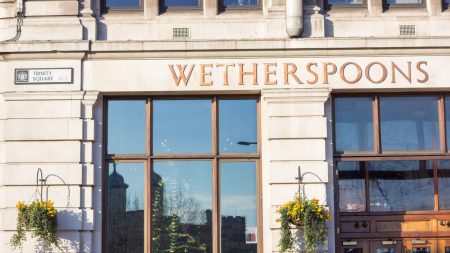The idyllic coastal village of Old Hunstanton, Norfolk, a popular second-home destination for the affluent, has become embroiled in a bitter dispute over a newly constructed “Grand Designs” style mansion. The three-story property, built by a London financier, has ignited a firestorm of criticism from residents who deem it an eyesore, a blatant disregard for planning regulations, and an invasion of their privacy. The controversy has deeply divided the small community of 650, creating rifts that locals fear will never heal. The parish council has been inundated with complaints, forcing them to issue a plea for residents to cease the barrage of abusive messages and calls directed at councillors.
At the heart of the discontent lies the perceived incongruity of the modern mansion with the village’s traditional aesthetic. Neighbors complain that the imposing structure, significantly larger than the original chalet bungalow it replaced, looms over surrounding properties, compromising their privacy and blocking natural light. The inclusion of a balcony and barbeque area is seen as a particular affront, offering direct sightlines into neighboring kitchens. The stark contrast between the contemporary design and the surrounding architecture has led many to label the house an eyesore, a jarring disruption to the village’s charm.
Adding fuel to the fire are allegations that the property’s construction deviated from the approved planning permission. Residents claim the building is taller than originally stipulated and that the addition of a basement, instead of the planned attic, constitutes a significant breach of regulations. They argue that the developer exploited loopholes in the planning process to construct a larger and more imposing structure than initially approved. This perceived disregard for established rules has further fueled resentment and fostered a sense of injustice within the community.
Opponents of the new house have expressed their frustration with the planning process, questioning the efficacy of regulations if they can be so easily circumvented. They believe the council’s apparent leniency sets a dangerous precedent, potentially paving the way for further unchecked development that threatens the village’s unique character. The controversy highlights the tension between the desire for modernization and the preservation of a community’s established identity, a conflict playing out in many picturesque locations across the country.
The property owner, a finance chief, maintains that the alterations to the original plans, including the balcony, windows, and basement room, are minor and have been submitted for retrospective planning permission. He contends that the building always intended to be three stories, with the lower ground level partially submerged. He further asserts that the addition of the lower ground room utilizes pre-existing space within the property’s foundations and does not impact the overall external appearance or impinge on neighbors’ privacy. A planning officer has recommended approval of the retrospective application, echoing the owner’s arguments.
Despite the owner’s assurances and the planning officer’s recommendation, the dispute remains unresolved and continues to fester within the community. The controversy surrounding the “Grand Designs” mansion has become a lightning rod for deeper anxieties about the changing face of Old Hunstanton, a village increasingly sought after by wealthy second-home owners. The influx of affluence has driven up property prices, making it difficult for local families to remain in the area and leading to concerns about the erosion of the village’s traditional character. The new house, viewed as a symbol of this transformation, has become a focal point for long-simmering tensions.











